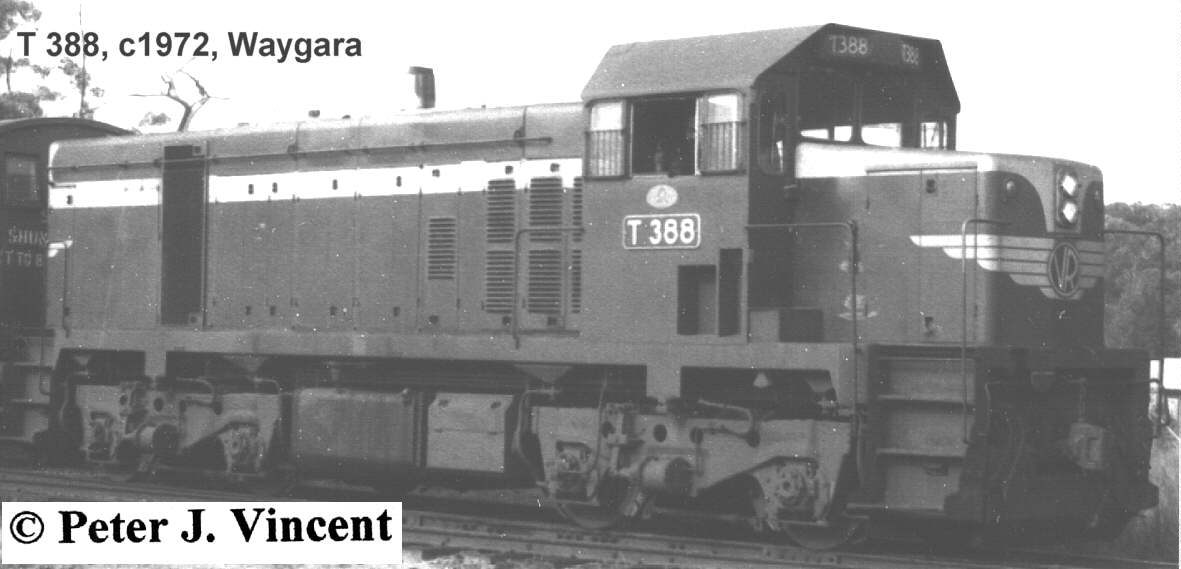

These locomotives were built between 1955 and 1968. They were a replacement for steam engines on branch lines.
They ran on all types of trains and most lines of 60lb rail or more.
The controls were set up for long end running. Short end running was possible by sitting sideways. Some of the original locos were fitted with dual controls. These were later altered and further units fitted with single control sets to save on construction costs.
There were several distinct types of hood design and power plant
Basic "Flat top" as EMD G-8 design. Not fitted with dynamic brakes. T320-T325 fitted with welded fabricated bogies. Others fitted with cast bogies.
Improved raised cab. Two types of body. Early units have G-8 end radiator grills and later numbers have full vertical opening between radiator and engine room. Units fitted with staff exchanger "pockets" under cab, but never utilised.
Raised cab with a chop nosed design. Power plant changed midway through numbers from 567 to 645 engine.
Delivered for hump service but recoded to _H__ 1 - 5.
Purchased from Portland Cement Company. It was 3'6" and was used in the cement operations at Fyansford to move the raw material that became cement. It was fitted with dynamic brake. It was converted to 5'3" and renumbered from "D 1" to T 413. This loco was assigned to Wodonga where it ran on the Cudgewa line. Train handling with dynamic brake on the continuous 1 in 30/1 in 40 grades and slow speeds made train running easier. When there were no Cudgewa runs, the loco was assigned to train running as required.